

Uh oh...
It appears that you're using a severely outdated version of Safari on Windows. Many features won't work correctly, and functionality can't be guaranteed. Please try viewing this website in Edge, Mozilla, Chrome, or another modern browser. Sorry for any inconvenience this may have caused!
Read More about this safari issue.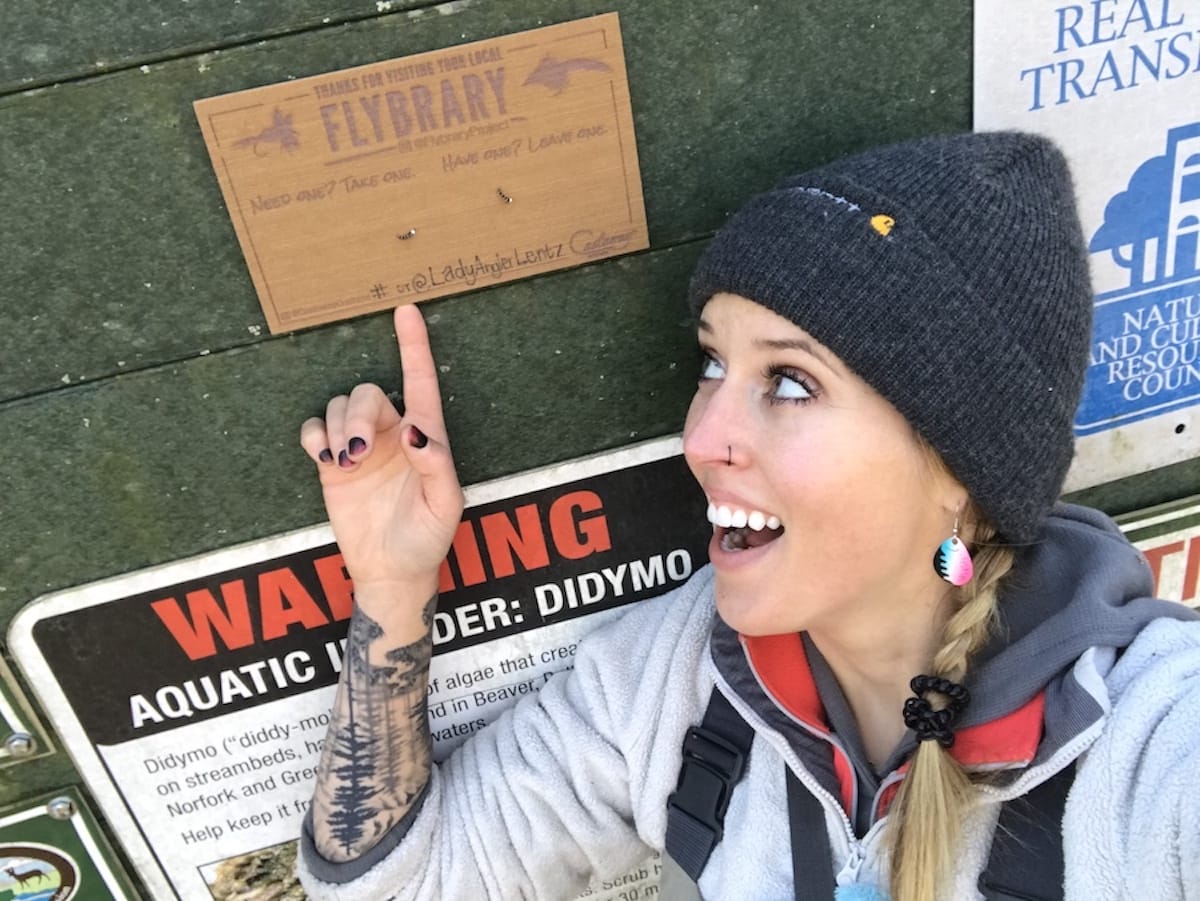

A year ago, fly-fishing wasn’t something Rebecca Lentz had ever tried, and she certainly didn’t have the word “flybrary” as part of her vocabulary. Not long after the Morrilton resident spotted someone fly-casting on Crooked Creek in the Ozarks, all of that changed. She’s now spreading awareness about the sport, and the new word, around the state of Arkansas.
“My boyfriend and I enjoy the outdoors and took a drive through the Ozarks for my birthday last July. I spotted a guy doing something in the water that looked like ribbon dancing with a fishing pole and was completely intrigued.”
Her curiosity led her to stick around and watch. It also led to hands-on education.
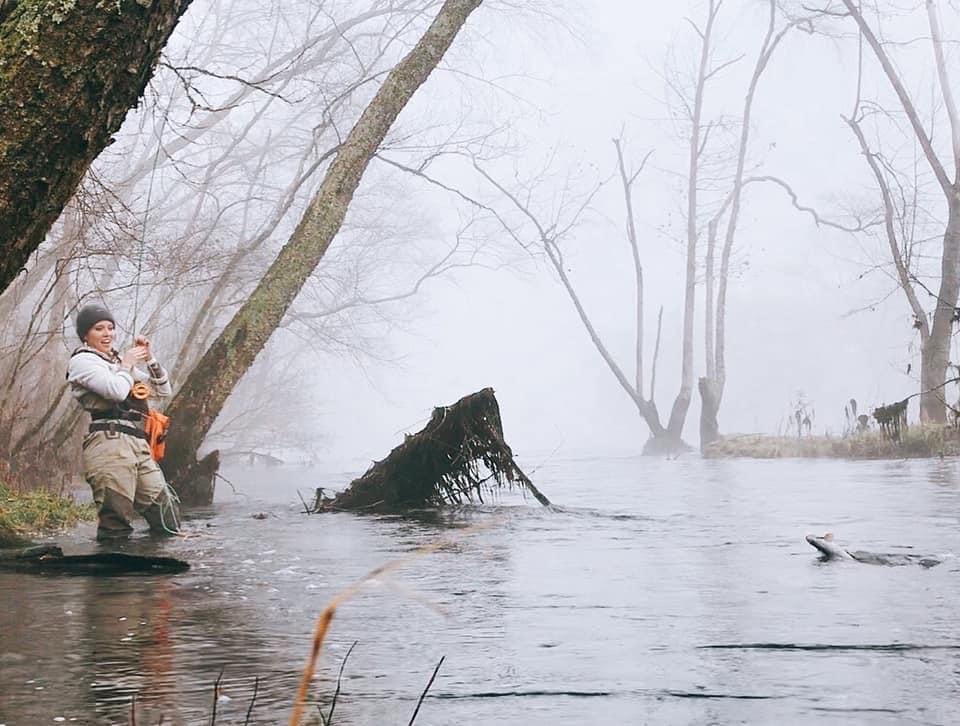
Discovering Fly-fishing
The man on the river noticed Lentz’s interest and took a few moments of his time to share his knowledge and let her experiment with casting. Fly-casting requires a much more complex method than traditional fishing by bait-casting because you cannot rely on the weight of the bait or lure to pull the line where you want it to go. It requires a back and forth motion to build momentum in the line so the angler can land the fly in a specific spot on the water and set the hook in a fish’s mouth.
“I love the outdoors and just moving…things like yoga and hiking. Fly-fishing looked like yoga of the water, and I wanted to be involved. It’s not as easy as it looks.”
The first time I saw someone glide across the water on a stand-up paddleboard, it changed my life. I was drawn to a new sport and a new hobby. This learning adventure opened up an avenue to spend more time in the outdoors, something about which I am passionate. The same kind of experience happened to Lenz after that first fly-fishing session.
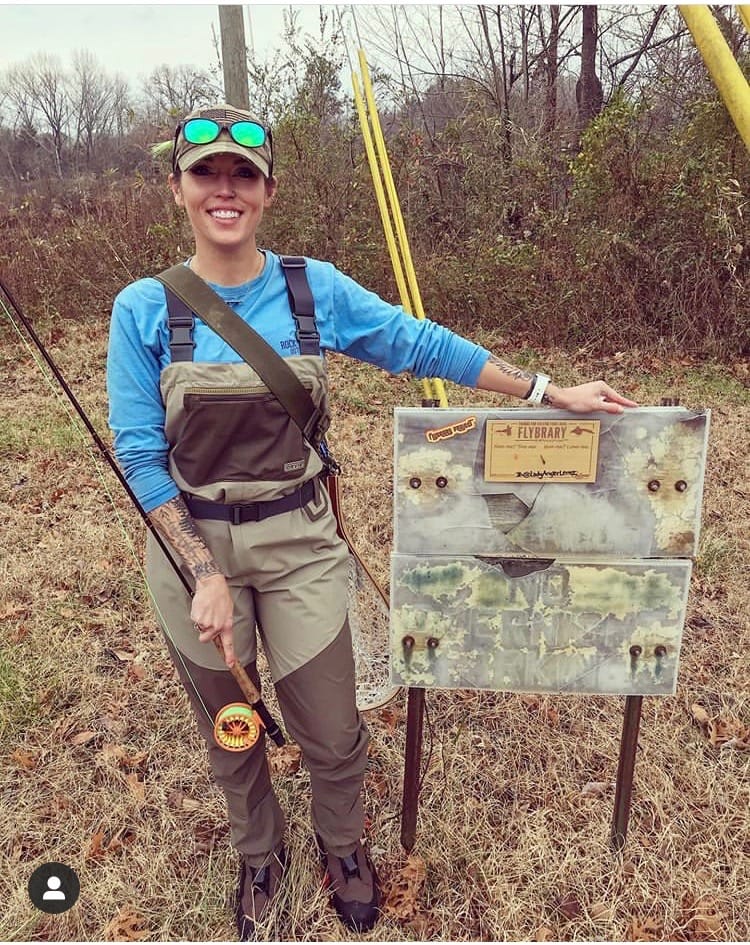
Discovering Flybraries
Lentz, already an Army veteran and auto mechanic, had discovered a new passion. Determined not to be discouraged by her novice status, she began extensively researching the sport. She connected with local outfitters to learn about equipment, watched videos, read articles and started following other fly fishers, particularly women, online. Lentz’s research led her to The Flybrary Project website.
The idea behind flybraries is similar to that of Arkansas’s Little Free Libraries and Little Free Pantries: leave what you can and take what you need. Flybraries are popping up at fishing and boating access points across the nation, and Lentz has made it her mission to bring these to various locations around Arkansas to exchange fly-fishing tools with other anglers.
I’ve been a fisher my whole life, but fly-fishing isn’t something I have experienced. Often considered an outdoor sport whose participants were mostly “old guys” (no offense, gentlemen), it’s not something in which a lot of young women were participating. That is changing. As it stands, the popularity of fly-fishing is growing among younger generations and, more surprisingly, younger women.

A New Kind of Give-and-Take
Already a fan of geocaching, Lentz thought the concept of following GPS coordinates to locate flybraries was a novel idea. Not only would she be able to discover new fishing locations, but she would also be able to trade flies with other anglers. Much to her dismay, Lentz found that none had been logged in Arkansas. Lentz knew right away that not only would she learn about fly-fishing, but she would also make her way across Arkansas to discover new fishing grounds, placing new flybraries as she went.
At each flybrary, Lentz leaves a few hand-tied or purchased flies (artificial lures), in hopes of helping out other anglers. When she returns to several locations, she sees that some of her flies have been used and that new ones are placed.
To date, Lentz has placed eight flybraries around Arkansas and is planning to install even more in the coming months. She hopes to see fly-fishing become more popular and hopes that the flybraries grow in popularity, too.
“Don’t be afraid to be a novice [fly fisher]. We all have to start someplace. I’d also like to see more lady anglers. I place the flybraries to help others, and it warms my heart to see others using them.”
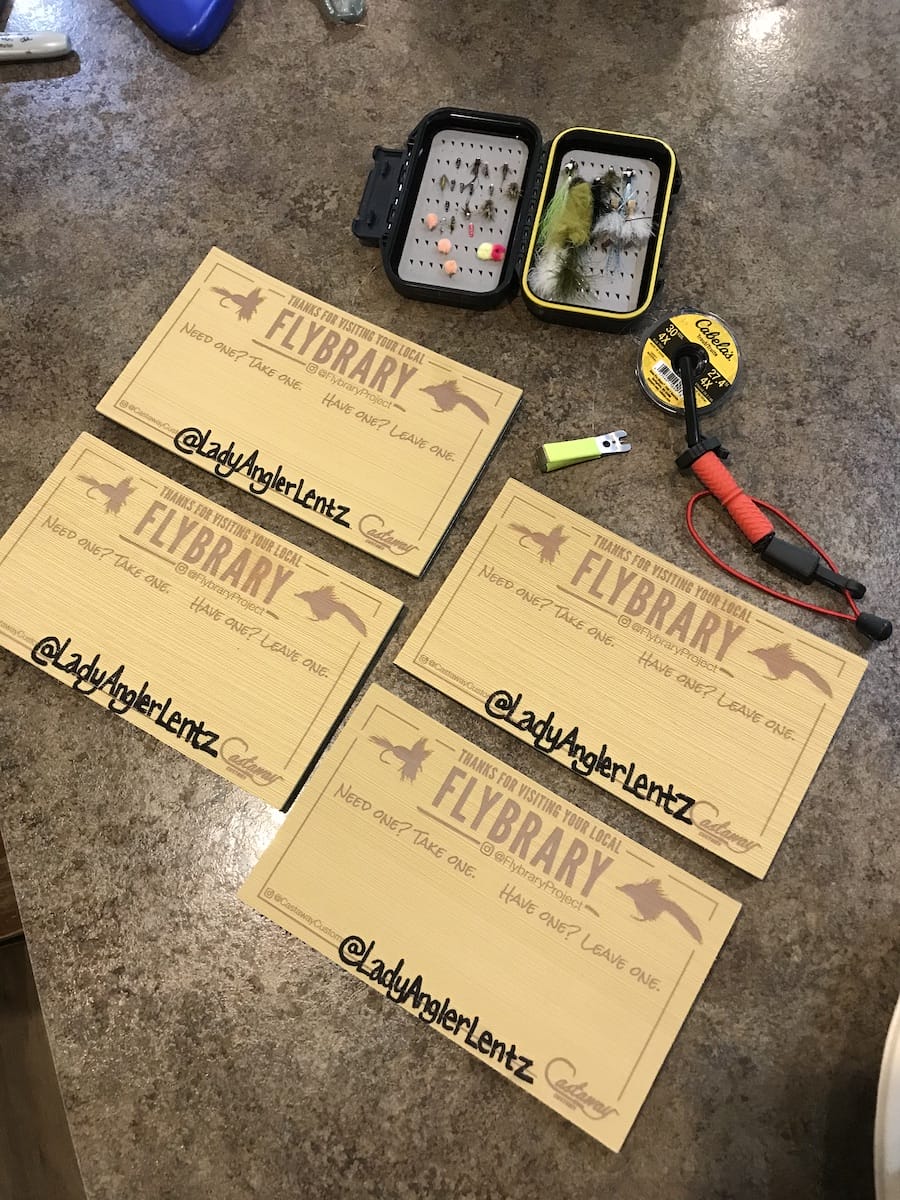
How to Place or Find Flybraries
Anyone can create a flybrary. Order a simple kit from The Flybrary Project for about $5 or create your own. They do ask that you register the GPS coordinates of your placements so they can add them to their nationwide map. The website contains a map listing the locations all over the country.
Locations of Arkansas Flybraries
The Flybrary Project has been a bit backlogged on updating flybrary locations. Lentz has provided a list of the Arkansas flybraries that she has placed to help you participate in the project. She would love to see you add flies or even add new flybraries in other locations.
- Two along Little Missouri River (Narrows Tailwater and Little Mo River Walking Trail)
- JFK Park Access – Little Red River – 35.512416, -91.996515
- Cow Shoals Access – Little Red River – 35.513140, -91.930642
- Barnett/Winkley (Swinging Bridge) – Little Red River – 35.489662, -91.971742
- Libby Shoals – Little Red River – 35.456551, -91.948301
- Ramsey Access – Little Red River – 35.452313, -91.775979
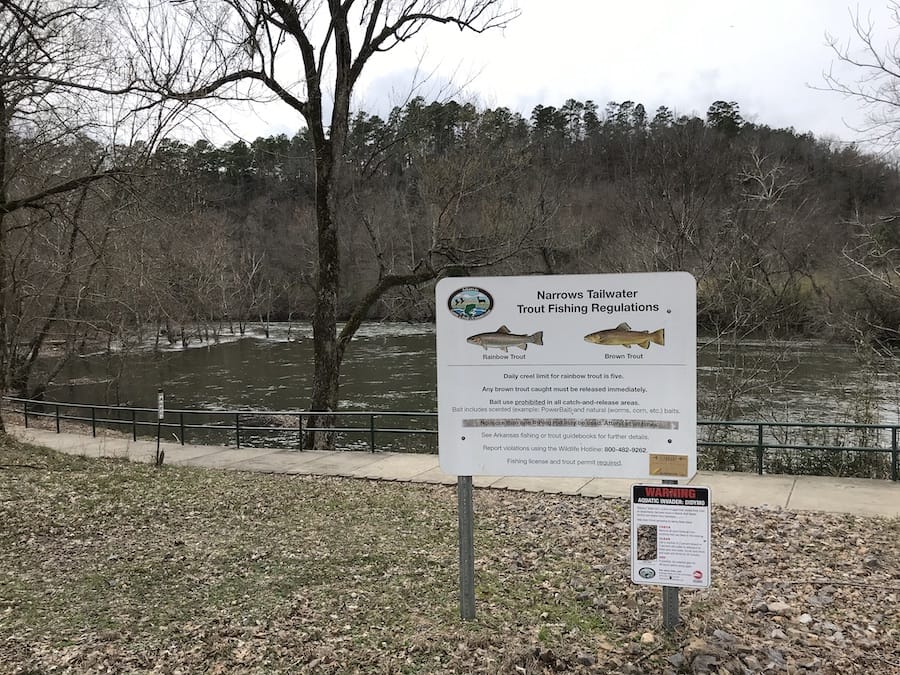
Interested in Learning More About Fly Fishing?
Follow Rebecca Lentz on Facebook and Instagram.
Connect with a local outfitter and guide service.
Join Fly Fish Arkansas or the Central Arkansas Angler Network Facebook groups.
Women may want to check out the Women Outdoor Network of Central Arkansas.
Photos courtesy of Rebecca Lentz.
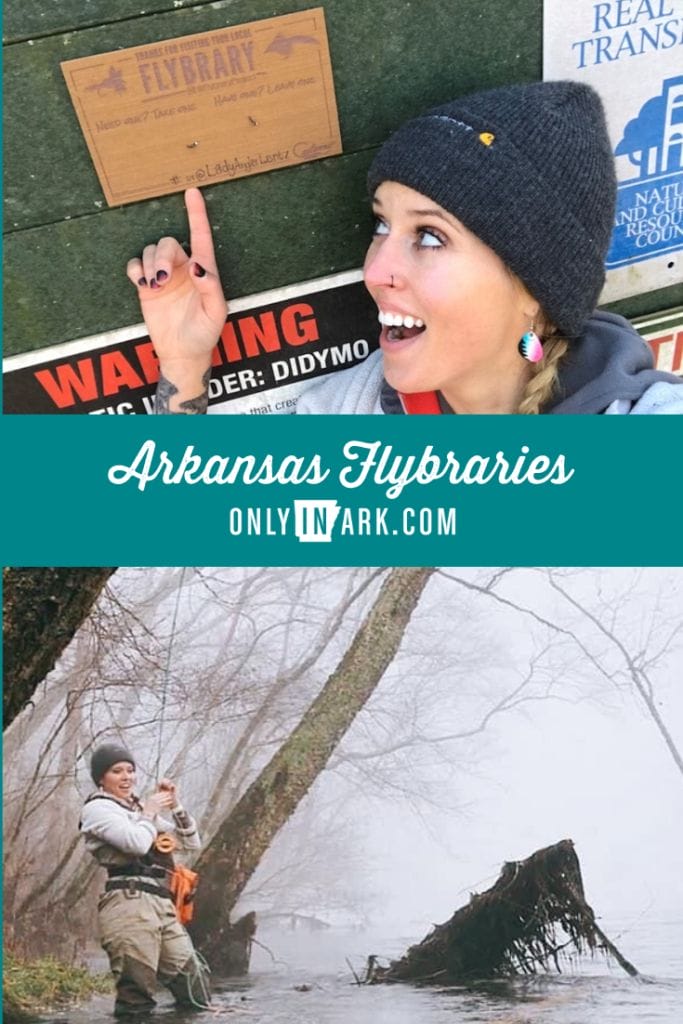
Join the Conversation
Leave a Comment
3 responses to “Arkansas Flybraries for Anglers”
 Leave a Reply
Leave a Reply
We do the work.
You check your email.
Sign up for our weekly e-news.
Get stories sent straight to your inbox!












 Leave a Reply
Leave a Reply
I love this!!!!!! Great job Rebecca Lentz!
[…] Nativ’s designs are meant to inspire the adventurer, the explorer, and the wanderer while keeping them connected back home. In light of that, Nativ commits 5% of sales to the Mayfly Project which helps to mentor children through fly fishing. […]
[…] is Rebecca Lentz-Baker, better known in the social media world as @LadyAnglerLentz. When I first wrote about Lentz-Baker in 2020, she was still relatively new to the world of fly fishing. In just under two years, she has taken […]